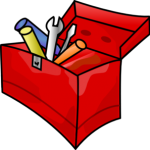 Librarians across the U.S. will be recognizing “Banned Websites Awareness Day” (BWAD) on 9/28/16. Working toward unrestricted access to information and resources should be one of librarians’ top priorities. Choice in checkout helps students (yes, even kinders) practice a lifelong learning strategy. Internet filtering and blocked Web sites and social media are an on-going challenge in many schools and libraries.
Librarians across the U.S. will be recognizing “Banned Websites Awareness Day” (BWAD) on 9/28/16. Working toward unrestricted access to information and resources should be one of librarians’ top priorities. Choice in checkout helps students (yes, even kinders) practice a lifelong learning strategy. Internet filtering and blocked Web sites and social media are an on-going challenge in many schools and libraries.
Children’s Internet Protection Act (CIPA) was passed in April, 2001, in order to address concerns about children’s access to obscene or harmful content over the Internet. Just as school library policies can minimize the frequency of book challenges, policies can also mitigate complaints regarding Web-based information.
According to CIPA:
“Schools and libraries subject to CIPA are required to adopt and implement an Internet safety policy addressing:
◾Access by minors to inappropriate matter on the Internet;
◾The safety and security of minors when using electronic mail, chat rooms and other forms of direct electronic communications;
◾Unauthorized access, including so-called “hacking,” and other unlawful activities by minors online;
◾Unauthorized disclosure, use, and dissemination of personal information regarding minors; and
◾Measures restricting minors’ access to materials harmful to them” (FCC).
While protecting children and youth from obscene and harmful information is essential, overly restrictive filtering software may prevent young people from accessing information that is important to their health, wellness, and intellectual growth. School librarians, in particular, may frequently be in the position of advocating for a particular educational website to be unblocked. The wise school librarian makes friends with the IT department and helps to educate administrators about the importance of students having opportunities to practice digital citizenship.
If students are to become responsible, informed digital citizens, they must be given guidance as they develop skills to evaluate information. They must learn to use social media venues in an environment in which they are accountable for their communications. School librarians in collaboration with classroom teachers can provide youth with learning experiences so they can explore, evaluate, and responsibly use Web-based information and tools.
As AASL notes, “Relying solely on filters does not teach young citizens how to be savvy searchers or how to evaluate the accuracy of information” (BWAD Background).
Update 10/8/21: COPPA Issues with Apps
A recent study has determined that “1 out of 5 Children’s Google Play Apps Breach Children’s Online Privacy Protection Act Rules” (Bischoff 2021). As we increase students’ agency in guiding their own learning, it is our responsibility to ensure that we help them and their families protect their privacy. Knowing the COPPA rules and ensuring the resources we point students to is one way keep them safe online. Teaching students the importance of and how to protect their online privacy is another.
What are you doing in your school to recognize BWAD? How are you helping young people (and their families) learn to protect their privacy online?
Works Cited
American Association of School Librarians (AASL). “Banned Websites Awareness Day.” ALA.org. http://www.ala.org/aasl/advocacy/bwad. Accessed September 21, 2016.
American Association of School Librarians. “Banned Websites Awareness Day Background.” ALA.org. http://www.ala.org/aasl/advocacy/bwad/background. Accessed September 21, 2016.
Bischoff, Paul. 2021. “1 out of 5 Children’s Google Play Apps Breach Children’s Online Privacy Protection Act Rules.” Comparitech, June 22. Available at https://www.comparitech.com/blog/vpn-privacy/app-coppa-study/. Accessed October 8, 2021.
Federal Communications Commission. “Children’s Internet Protection Act.” FCC.org. https://www.fcc.gov/consumers/guides/childrens-internet-protection-act. Accessed September 21, 2016.
Image courtesy of AASL









 AASL Best Apps for Teaching and Learning 2013
AASL Best Apps for Teaching and Learning 2013